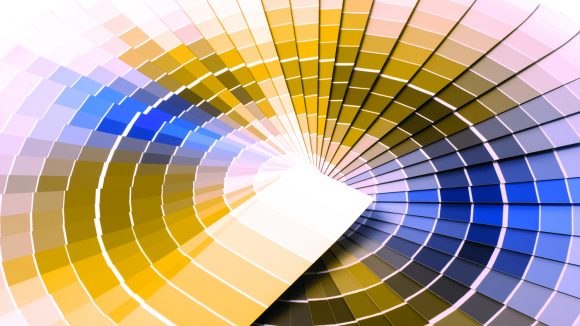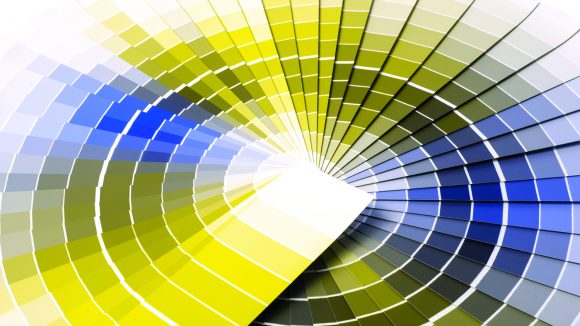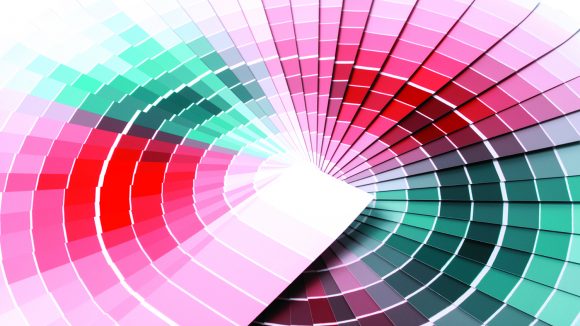It ain’t easy seeing green
Sightsavers’ digital designer Matt Roberts explains how his colour blindness helps him to look at things differently.
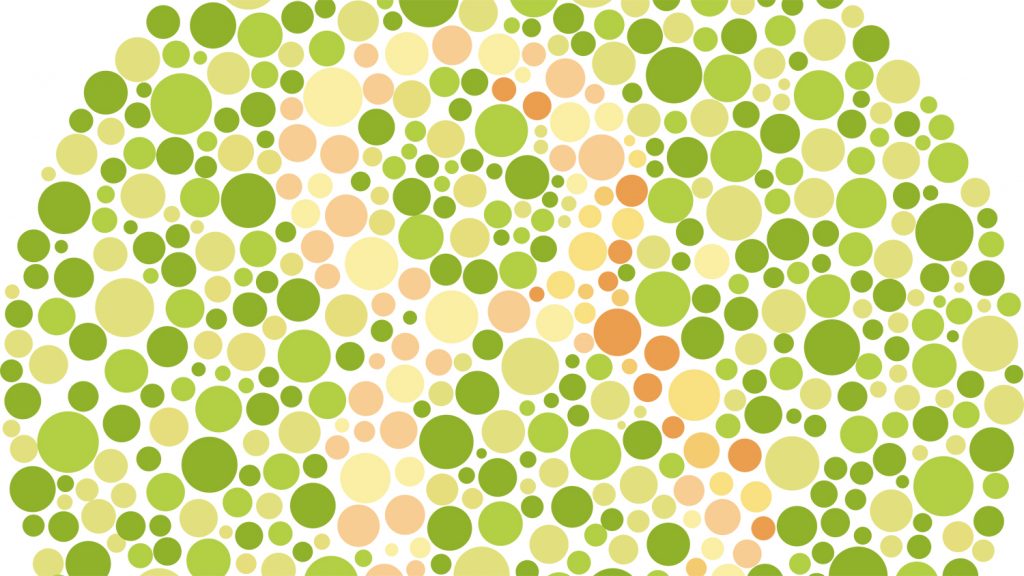
“It wasn’t until secondary school that I found out I was colour blind.
I never noticed anything out of the ordinary: the corridors of my primary school were probably pasted with coloured sugar paper cutouts spelling ‘Yellow’ or ‘Red’, but it didn’t ring any alarm bells. On sports day, I never had any problem working out which team I was in – I always managed to wear the right colour T-shirt for the annual egg and spoon race.
When I was 12, during a routine eye check, the optometrist passed me the Ishihara colour vision test. (It’s named after Japanese eye specialist Shinobu Ishihara, who invented it in the 1900s.) You’ve probably seen something similar: a circle of coloured dots, with a number picked out in a different colour.
“Read me that number,” the optometrist asked me. “What number?” I replied.
I couldn’t distinguish colours: it was as clear – or unclear – as that.
The three main types of colour blindness
I was told I had a variation of colour blindness where I can’t easily tell the difference between reds and greens. That doesn’t mean I can’t tell what colour grass is; instead, I find it almost impossible to spot berries in a holly bush. Day to day I don’t notice it, and it doesn’t stop me doing everyday tasks, although being told that my favourite brown trousers are actually green was rather awkward.
From an early age I loved drawing and colour-by-numbers. I never seemed to have any issues with it, but I suppose when you’re growing up, parents and teachers don’t necessarily assume every child who draws a purple dog is colour blind.
Throughout school and university I was interested in all aspects of art and design, from Jackson Pollock and Joan Miró to Zaha Hadid, David Carson and Stefan Sagmeister. The artists and designers I admire mainly break conventions in shape and form, and don’t rely solely on colour to capture an audience – they focus on expression and concepts, rather than using a single element to evoke a response.
I wouldn’t say my colour blindness has held me back too much in my design career. If I’d wanted to be a pilot, it would have been a different matter. But being colour blind means I instinctively design colour-blind-friendly work – I can’t help it. If I can’t read a block of text on a coloured background, I’ll change it. And I’ve always been old fashioned when it comes to checking my work. I’m not too shy to ask: “Excuse me, can you check that this colour is what I think it is?”
“I wouldn't say my colour blindness has held me back too much in my career”
Practical problems
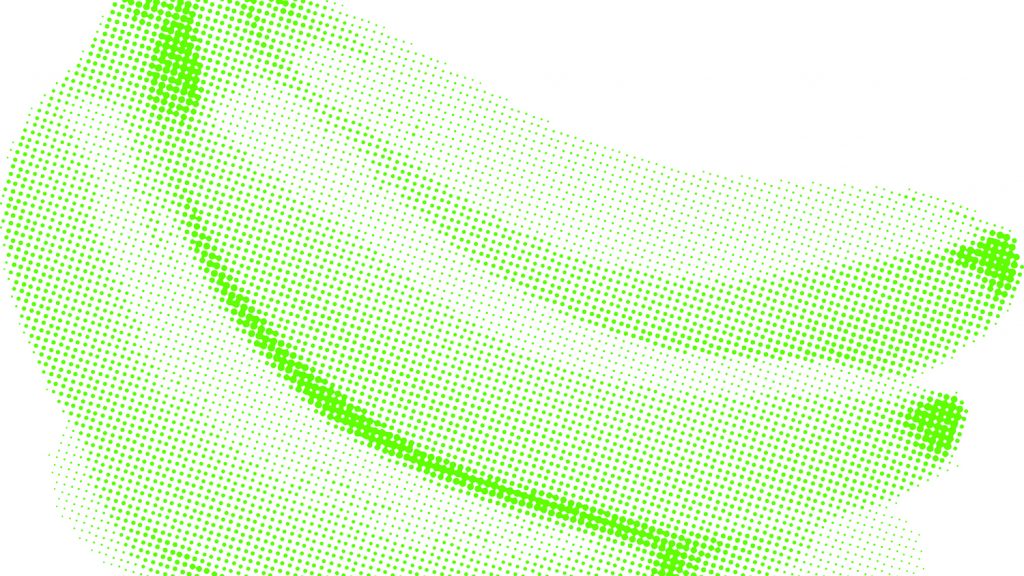
Christmas is the only time when I find it challenging, design-wise – everyone traditionally wants reds and greens on everything. At that point, I have to look at the concept I’ve chosen. Is it strong enough that if I strip the colour out to simulate colour blindness, it still works? Thankfully, over the years, trends have steered towards more sophisticated colour combinations.
My main frustration is when I come across designs that use ill-conceived colour palettes, because it makes it nearly impossible for me to see them. Graphs are an absolute pain! There are so many occasions where the shades of blue, purple and green look so similar to me that the key may as well not exist. At the very least, the designers could consider a better contrast of tints. At best, different patterns would make understanding trends, forecasts and profits a whole lot easier.
I do get it: certain colours are ‘trendy’, ‘punchy’ and ‘fresh’ (replace with your favourite buzzword). But if your product is for mass consumption, why design it in such a way that people can’t read it?
There are loads of tools and plugins that are available to simulate colour blindness and other visual impairments. Many of them let you overlay a window on top of any project you’re working on, to visualise colours as they are perceived with various types of colour blindness. It only takes a second, but can make the difference between people understanding and appreciating your work, and ignoring it altogether because they’re unable to see it.
“I view colour blindness as a positive: a more natural way to appreciate design”
Did you know?

Recently, I invested in some Enchroma glasses that aim to correct colour blindness: they use coloured lenses to filter certain types of light, adjusting your perception of colour. I was hoping they’d help me see the world through ‘normal’ eyes. But would they change my approach to design and colour?
When I first put them on, it was surreal – brilliant, but surreal. I was smiling from ear to ear. Everything looked more vibrant – ColourHD! Wow! I noticed colours were brighter and easier to distinguish. Is this what most people see, I wondered?
I love wearing them and being able to see colours ‘properly’ for the first time. But if I’m honest, why should I be normalised? I wear them to see what most people see, but I like to view colour blindness as a positive: a more natural way to appreciate design for people who can’t differentiate colours as well as others. My real-life experience of colour blindness gives me greater insight and empathy – and I wouldn’t change it for the world.”
“When I first put on the Enchroma glasses, it was surreal – brilliant, but surreal”
Author
 Matt Roberts
Matt Roberts
Matt is a digital designer at Sightsavers, where he has worked since August 2017.
Learn why accessible design is so important to us
Perspectives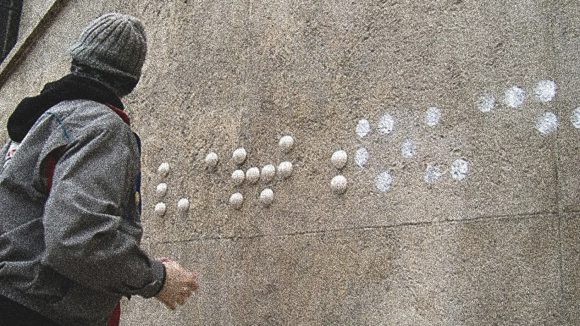
Braille in the spotlight
More than 200 years after it was invented, Louis Braille’s tactile code is holding its own against modern technology, and is inspiring designers and artists to get creative.

How Microsoft is championing inclusive technology
Microsoft’s Hector Minto shares groundbreaking accessibility features that aren’t just aimed at people with disabilities.
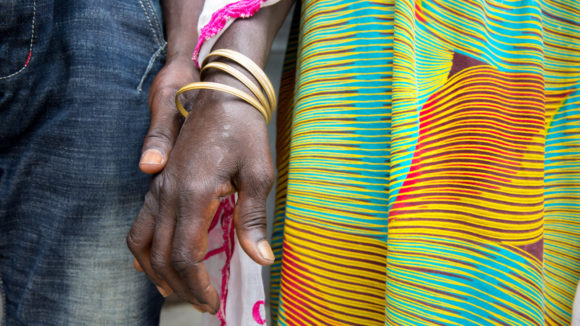
How we make our work inclusive
Ensuring your work can be understood by everyone should be an essential part of all your communications. Here’s a rundown of how to do it.
